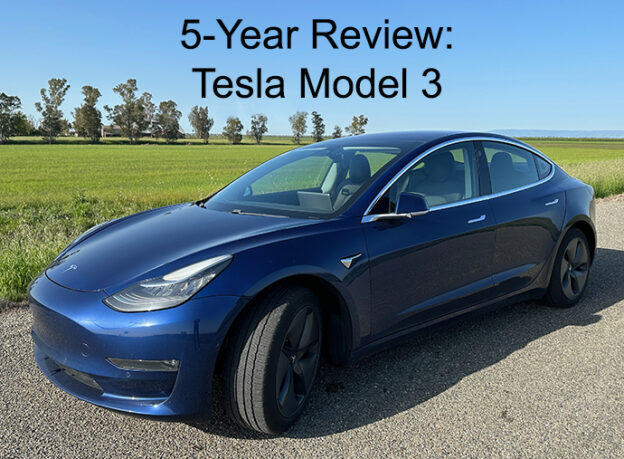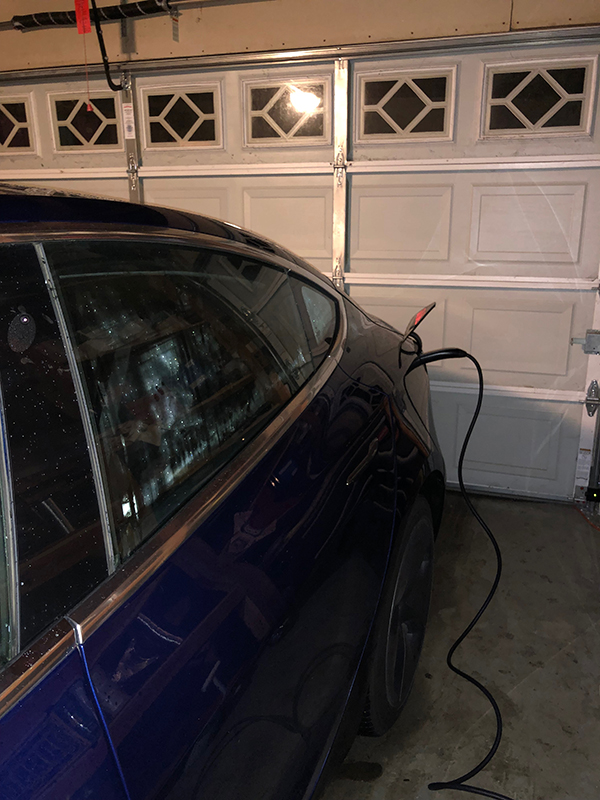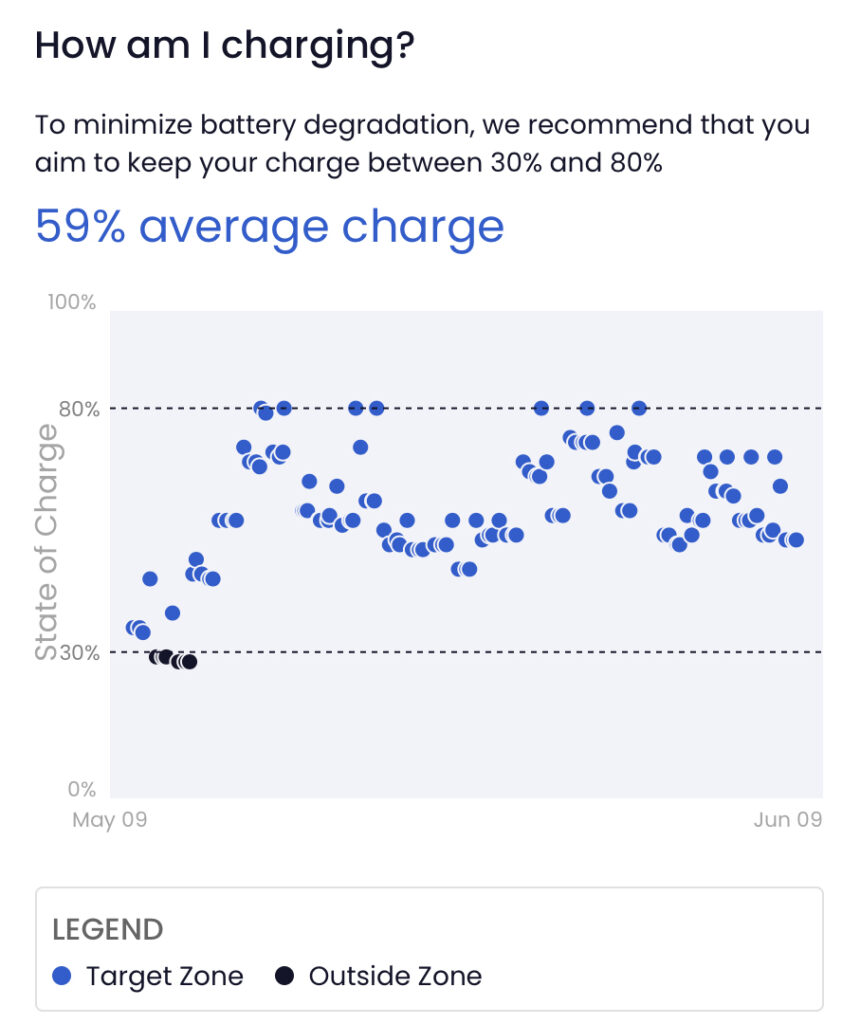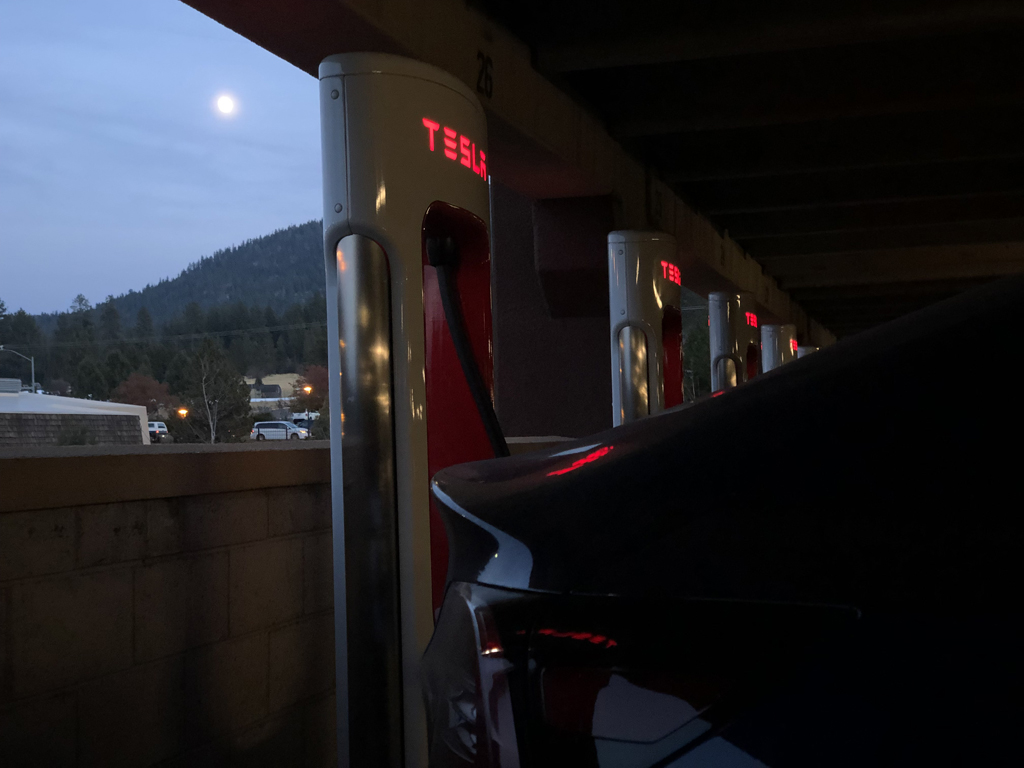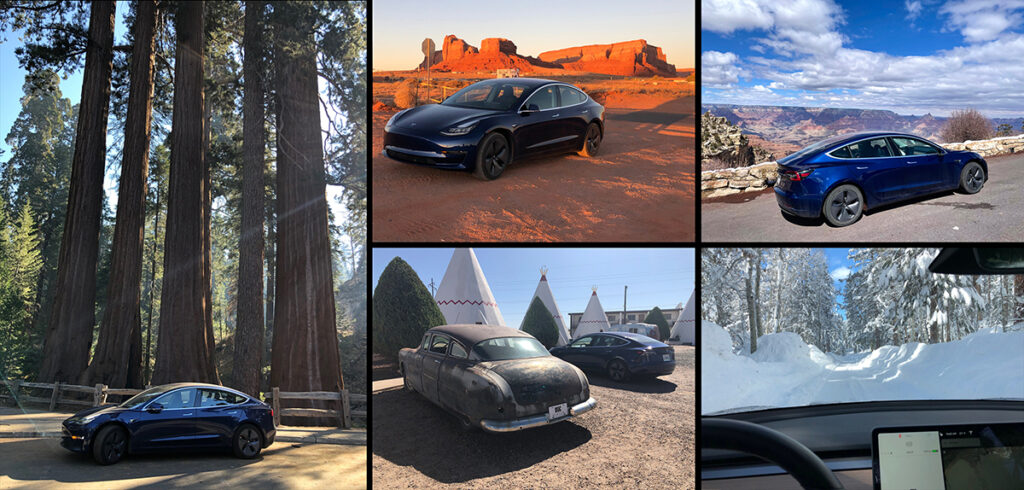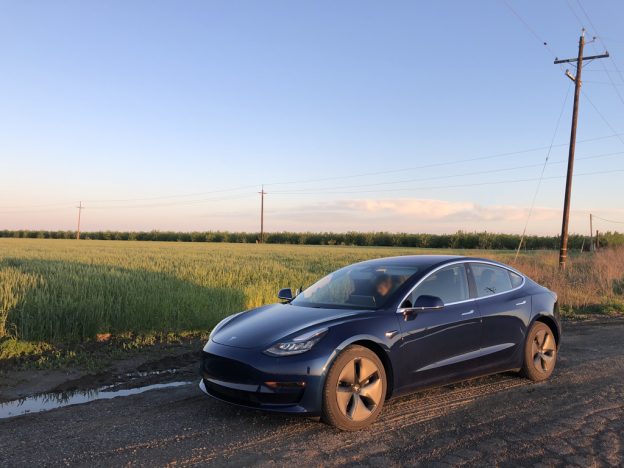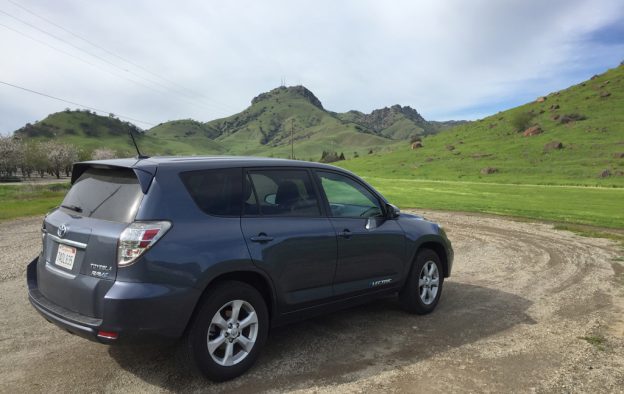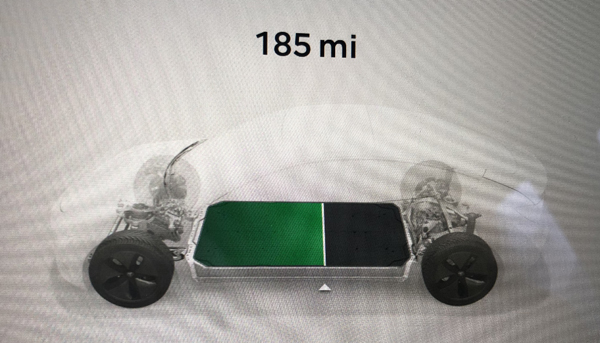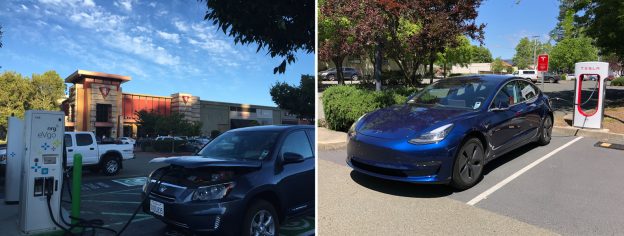April 2023. California. Part 4 of my 5-year review on the Model 3
When we got our car in April 2018 it had 310 miles of rated range. A software update in 2019 increased the usable portion of the pack giving us 325 miles of range. After 67,000 miles and 5 years years of travels a full charge on our 2018 RWD Model 3 now reports 291 miles of rated range.
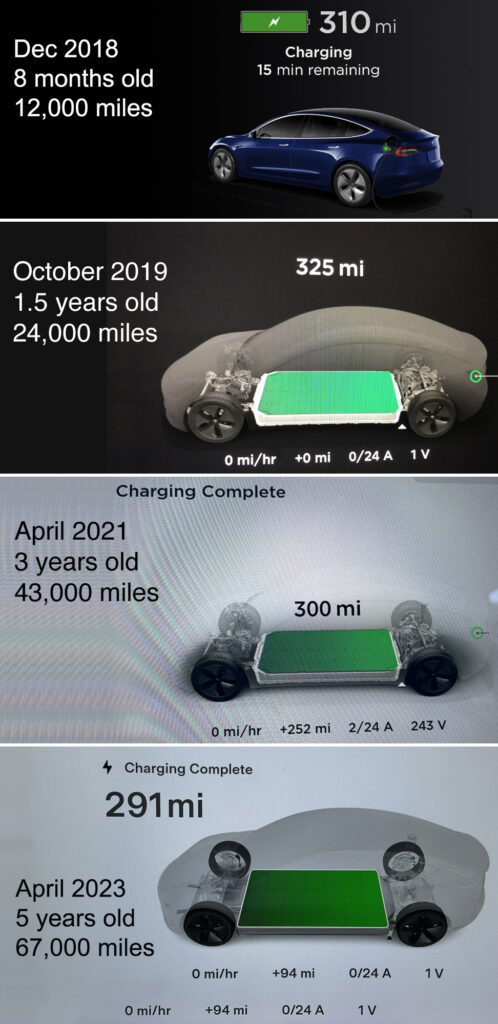
*Rated range is based on EPA testing and is the estimate of how many miles the average person can drive based on the amount of energy stored in the battery pack.
The rated range of my battery pack dropped pretty quickly from 325 to about 300 miles at the end of 2020. I don’t know whether that was actual degradation, or if Tesla changed their method for calculating range, or if they increased the size of the buffer on the packs. Whatever the case, over the last 2 years my range has slowly gone down about 5 miles per year from 300 miles to 291 miles. Compared to the peak 325 miles of range I’m at 89.5% of capacity, and compared to the initial 310 miles I’m at 93% of initial capacity.
How I charge my car: 90% of my charging has been at home on a 240 Volt 30 amp clothes dryer outlet. I drive 50-60 miles a day and charge for 2 hours each morning before I leave for work. On a daily basis I’m usually operating between 40 – 70% SOC. I only use Superchargers for out of town trips, and that adds up to 10% of the energy used to charge my car so far. The full charge at year 5 was the 5th time I’ve charged to 100%.
I was hoping for less degradation. I called Tesla, they analyzed my battery pack and said I’m at 0.4% below average for cars similar to mine – within the normal range, just a bit below average. Whatever the case, in the real world 291 miles of range is not a problem for me. We have plenty of range for the most common trip we take: 180-200 mile round trip visits to the Bay Area. Example: A couple weeks ago we visited the California Academy of Sciences. For that trip Ieft home with a 90% charge (260 miles) and after 198 miles of driving we arrrived home with 84 miles in the pack.
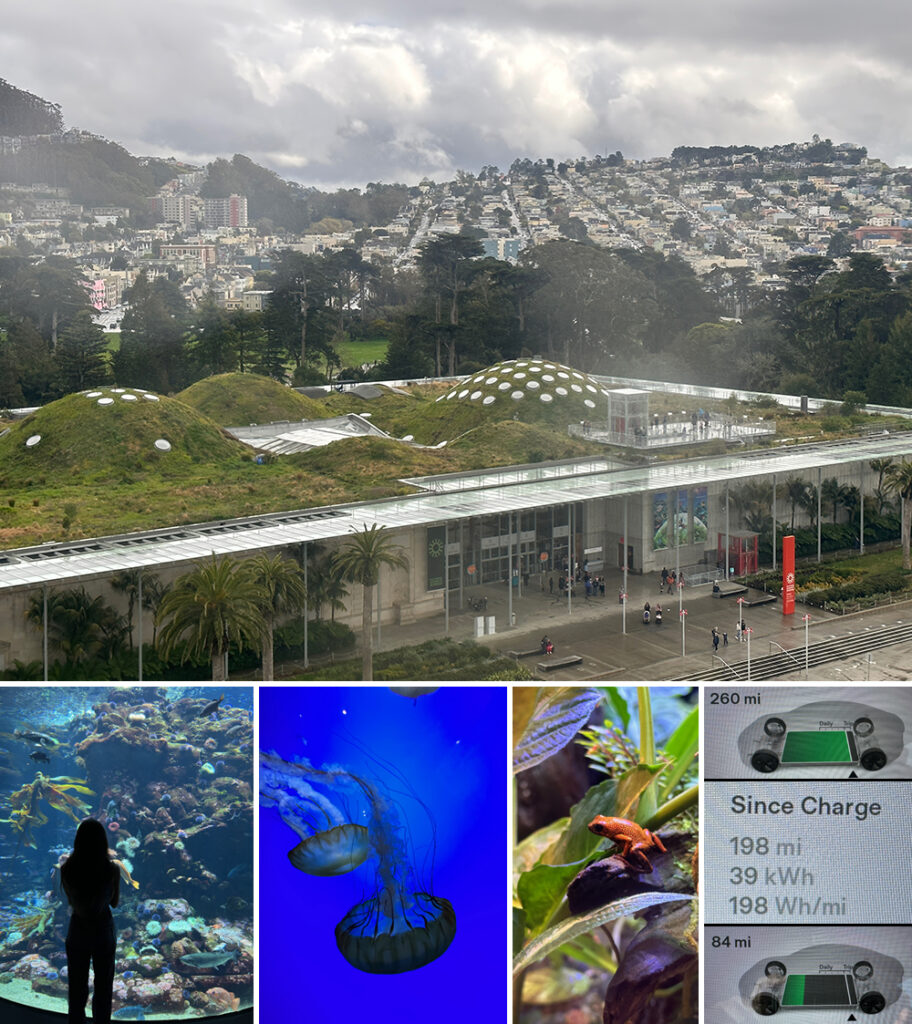
291 miles of range is also plenty of range for my road tripping – I usually operate between 30-80% SOC on the road. The longest distance I’ve driven so far between charging sessions is 238 miles. On road trips I average about 150 miles between Superchargers, with the longest distance between Superchargers at 223 miles. And the longest I’ve driven from a Supercharger to a Level 2 destination charger was 177 miles. So 291 miles of rated range has been more than enough for me.
Battery Health: A relatively new company, Recurrent Auto, is addressing battery health, primarily for used car buyers. From their website: “Today the health of an electric vehicle battery is a black box. Recurrent is working to change that by collaborating with thousands of EV drivers and introducing advanced machine learning (to evaluate the battery health for individual cars)”. I signed up for their service and below I’ve pasted screen captures showing Recurrent’s evaluation of my battery pack. I got 291 miles on a full charge – they estimated 289 miles.
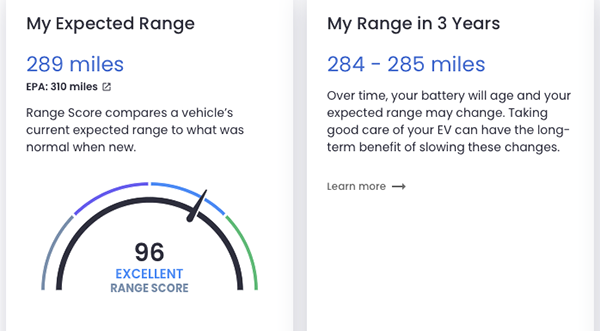
Recurrent provides a comparison of how your battery pack compares to other cars of the same make and build in their database, recommend charging habits to promote longevity of your pack, and graph out your State of Charge over time so you can take stock of your charging habits.

Calculating battery pack capacity: Tesla’s Rated Range calculation relies on the BMS estimate of capacity. A post on Tesla Motor Club states that the Model 3 pack needs 3-6 hours of downtime (car completely off, contactors open) for the BMS to make the best evaluation of capacity, and describes a method to recalibrate Rated Range in the Model 3. According to this post it involves letting the car sit for 3-6 hours, completely off, so the HV contactors are open – and this should be done at a variety of charge states. HV contactors are not open when the car is using energy for things like cooling the cabin or sentry mode – features I use while parked at work. My car is completely ‘off’ for a good 8 hours overnight in the garage, but my SOC is usually between 40-70% on a day by day basis. Following advice from this post I should let my pack get to both a higher and lower SOC, let it sit over night and check if that impacts rated range estimates. If I notice a change I’ll update this post. But again, let me stress that 291 miles gets the job done for me.
This is Part 4 of my 5-year review. The review is broken up into short posts on different aspects of owning the Model 3. Additional posts will be linked below as they go live. Topics covered include:
- 1. Day 1
- 2. My opinion on the car
- 3. Quality & Reliability
- 4. Battery Pack Status
- 5. Charging
- 6. Emissions
- 7. FSD

